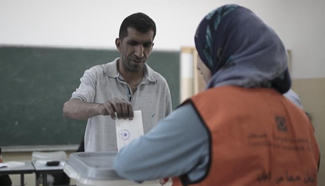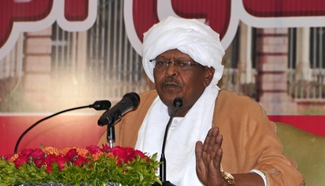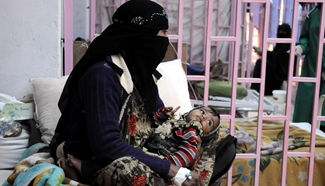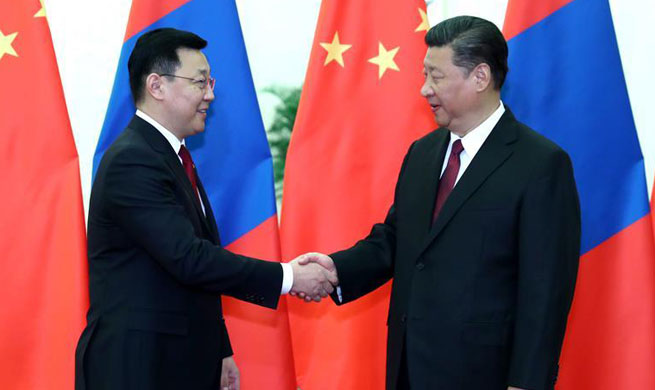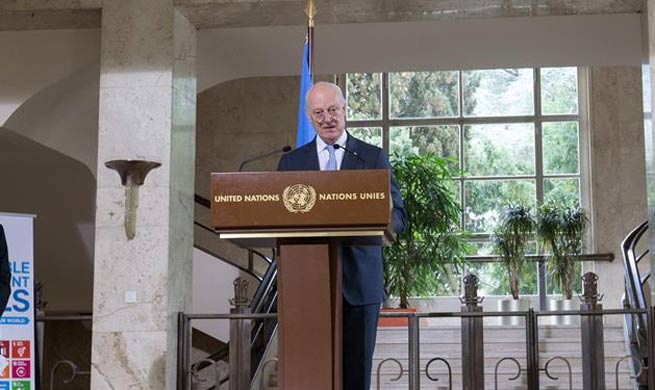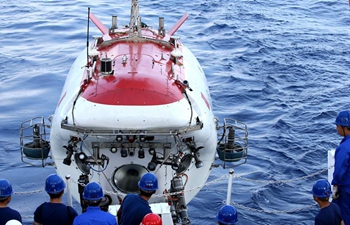TOKYO, May 12 (Xinhua) -- Japanese Defense Minister Tomomi Inada on Friday described as "deplorable" an unexpected parachute drill by the United States military at the Kadena Air Base on Okinawa's main island.
Inada told a press conference on the matter that the U.S. parachute drills should "basically" be conducted at an airfield on the remote Ie Island under an accord inked between Japan and the U.S. in 1996 and drills at the airbase should be an "exception" to the rule.
The defense minister said that the drills were not sufficiently explained by the United States and no reason was given as to why they might be an exceptional case. Inada intimated that the U.S. had flouted the 1996 agreement and lambasted the exercise.
"The United States did not offer sufficient explanation on why the exercise conducted Wednesday amounted to an exceptional case. It is extremely deplorable that it took place at Kadena Air Base without Japan and the United States able to share the same perception in advance," Inada said.
"The Japanese side does not think this was an exceptional case," the defense minister added.
In April, local residents of Kadena were also up in arms about the the United States military conducting parachute training drills over Okinawa's mainland and described the exercises as completely unacceptable.
The town of Kadena plays host to the U.S. Kadena Air Base which itself is home to multiple air squadrons and accommodates around 20,000 service-members, their families and employees living or working there.
Some residents in Kadena still remember a tragic incident that occurred in 1965 involving an elementary schoolgirl being crushed to death by a trailer being parachuted down to a village during such a drill.
Prior to April, the area hadn't seen parachute drills by the U.S. military since an exercise at the base in 2011, that saw 30 personnel deploy from an MC-130 special mission aircraft, official accounts said.
The aircraft used to deploy the airmen are designed for infiltration and exfiltration missions and can also be used for resupply of special operations forces.
The large transporter-looking planes can also be configured to be used for air refueling of primarily special operations helicopters and tilt-rotor aircraft like the controversial Osprey, also hosted in Okinawa and mainland Japan, and the cause of great condemnation here for its checkered safety record.
The latest drill went ahead Wednesday, nevertheless, and despite local opposition, rising anti-U.S. military sentiment on the island and in spite of a request from the ministry's regional bureau to suspend the drill.
The defense bureau in Okinawa said the U.S. military switched choices of location for the drill owing to inclement weather around the airfield on Ie Island, with the bureau confirming for the first time that the contentious drill was held at night.
The government of Okinawa also protested the drill involving paratroopers being deployed from a plane at night, with Deputy Okinawa Governor Moritake Tomikawa summoning head of the Defense Ministry's regional bureau, Koichiro Nakajima, to hand him an official letter of protest.
The letter described as "outrageous" the fact that another parachuting drill had been conducted in quick succession at Kadena, despite official and local protests.
The letter went on to say that such drills on the Okinawa mainland cannot be allowed to become routine, with Tomikawa noting that local residents are becoming increasingly anxious.
Nakajima, for his part, said he would endeavor to press the U.S. side to conduct future parachute drills on Ie Island as per the 1996 accord on the matter.





